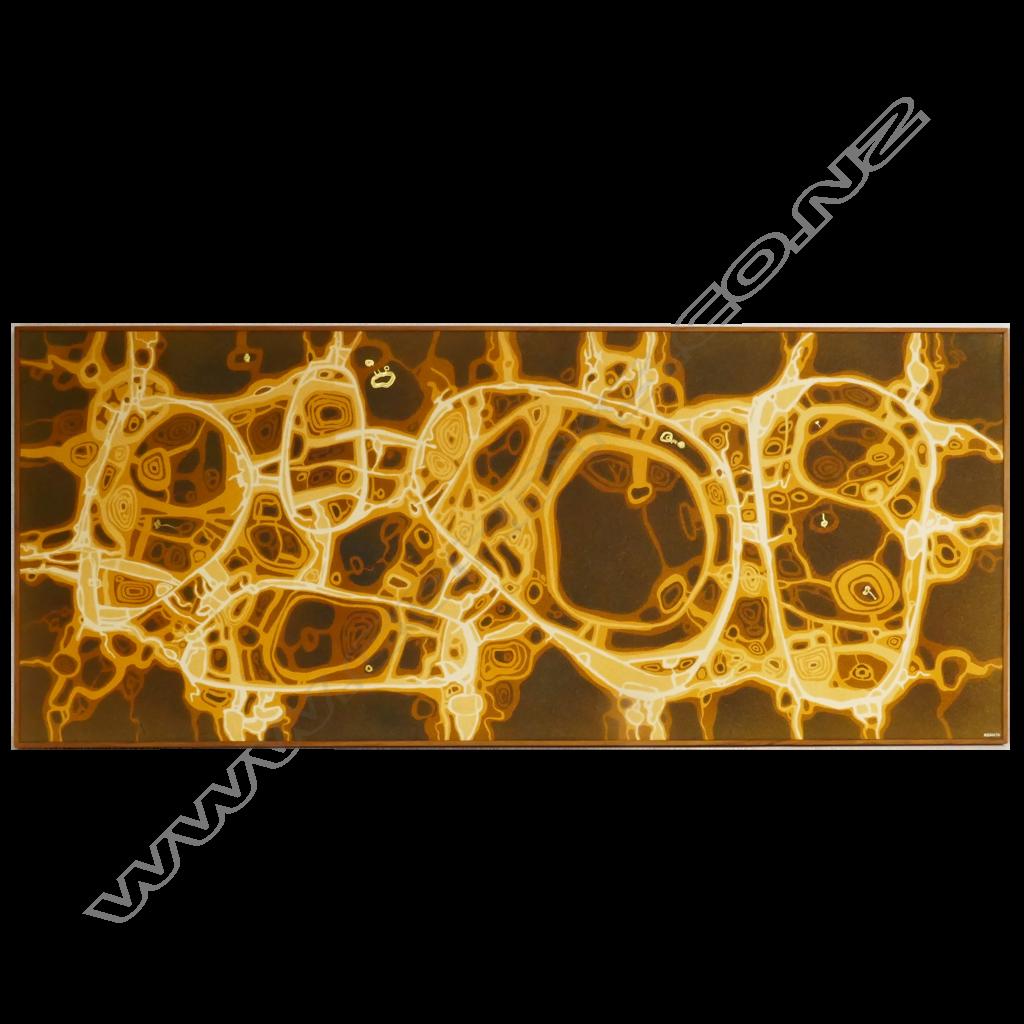THE GUY NGAN ESTATE COLLECTION Monday, 7 October 2019 - 6:00 PM start
Guy Ngan
Lot Details
'Australasia No.2', oil on board, signed and dated '73, entitled verso. 795 x 1900mm. Exhibited: Artspace -Aotearoa 'Guy Ngan: Either Possible or Necessary' 7 June – 17 August 2019. Too big to be confined ‘Australasia No.2’ (1973) conjures with the idea of a ‘landscape’ too big to be confined. Here compartments break down into contours, only to be overlaid with plans of ancient city walls, mounds and barrows all encircled by pre-historic tracks, linked by winding roads, bordered by canals and waterways that carry pale silt which break high-tide lines before flowing across beaches into dark seas. Ngan used this concept, painted in verdant greens, for his companion Waoku series, which in te reo refers to dense forest, reflecting an aerial view but also an embrace within the realm of Tane. Companion ideas to ‘Australasia No.2’ and the Waoku series also informed the design for the massive collaborative textile project ‘Forest in the Sun’ (1976) for the Beehive. In 1972 Ngan and his family made a trip to the Outback, after he won a sculpture competition for the town of Stanthorpe, Queensland. Liz Ngan recounts his fascination with the insect trails, landscape, rock formations and people. ‘Australasia No.2’ hints at great sandy deserts, tributaries of the Yellow River in China, mudflats of the Manukau harbour and, in Ngan’s lexicon, whispers of the migrations of people that populated and abandoned those places. We may call Ngan a New Zealand artist, but he called himself Pacific-Chinese, a twelve-year old émigré refugee from the Sino-Japanese war, with a complicated history of family, travel, employment and education. He thrived on that artistic and cultural complexity and his output was broad and multi-disciplinary. In the decade in which ‘Australasia No.2’ was produced Ngan was at the height of his powers, producing public art, including the mural for the Newton P.O in Karangahape Road and taking on the directorship of the NZAFA. ‘Australasia No.2’ is a major work, remarkable in scale, that comes from a period of incredible creative fertility. Ross Millar



